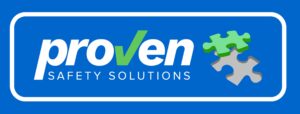Often the most common challenge I hear from safety professionals is getting the full executive team mindshare across the entire spectrum of work health and safety matters in an organisation, beyond a tick-the-box exercise.
The evolving road to worker safety requires a robust plan for longevity and transparency. The difference between strategically prioritised WH&S and operational administration of workplace safety that is delegated to a committee or stand-alone role to ‘take care of’ can quite literally be life or death. So how do we engage leadership in the journey of a culture shift in prioritising the safety of all employees?
Step One: Identify Key Stakeholder Mindset
The first step is to know your audience and undertake a key stakeholder analysis. Then you can identify who will support your goals, be ‘change ambassadors’ and leverage their level of interest, influence, power and urgency.
Why do we need to undertake this step? It helps to understand which stakeholders will progress your safety status and plans or who will hamper them. What is their current level of engagement and where do you need their interest and involvement to be? and in what form? Which stakeholder gets involved, and at what stage?
What is the purpose of that stakeholder in your projects and plans?
There are various stakeholder analysis tools, however, the Influence/Interest grid is a common tool to plot your Executive team, Board & CEO on. Determine where they sit in the grid and where you ideally need them to be in the future.

Step Two: Establish a Compelling Vision for Holistic Safety
Having identified stakeholders who will become the kernel of thought leadership and change within your organisation on safety & wellbeing, create an empowered vision aligned to the company mission & vision and values. Using the example above the key stakeholders to engage with to assist with developing the vision are:

Introducing safety as a core value, and undertaking a self-assessment of how safety & wellbeing sits against company core values will give you a marker on how close, or how far you are from realising the vision for safety in your organisation.
For example, in many organisations, common company values may include trust, respect, innovation, accountability, teamwork, quality and ownership. How closely are these values aligned to strategic safety needs?
Do staff trust leadership with their total safety? Does leadership respect the safety obligations & requirements and allocate the time and resources accordingly? Is everyone in the organisation aware of who is ultimately accountable for worker safety? Is ownership of WH&S shared strategically? Or delegated operationally? To achieve zero harm, leaders must ensure their values and actions are consistent at all times and across all levels of the organisation.
The American College of Healthcare Executives has developed a useful baseline tool to assess an organisation’s safety culture, providing a tailored self-assessment report and pathway to develop your engagement strategy.
From here in the cold hard face of reality you have the opportunity to create a compelling vision. Note here that what makes a vision compelling is not a fluffy feel-good story, but the data-backed return on investment figures for implementing your strategic plan around workplace safety. Leaders want to know where investment is going to move the needle on reducing risk, saving, time and money or increasing productivity in efforts toward WH&S initiatives.
Step Three: Establish Leadership Roles, Behaviours & Learning
Very often due to poor attention and practices towards safety in their past organisations’ many leaders simply believe that OH&S ‘belongs’ to HR or the Safety Manager.
Engaging leadership to onboard the safety vision requires providing clarity to them on what is expected. What their roles are, what behaviours are expected, and support leaders with the right learning.
Within the vision what role will the governing board play in creating and maintaining a safety culture? What is the CEO’s role? What is the leadership team’s role? What knowledge is required by leadership? Where are the knowledge gaps and how will they be reduced?
In collaboration with the board, it is the responsibility of the CEO to include accountability for safety as part of the leadership development strategy for an organisation.
Senior leaders are responsible for establishing safety-mindedness across all their teams, perhaps even more importantly, modelling the right behaviours and actions. These behaviours include but are not limited to, active communication, transparency, timely recourse and proactive attention to safety matters. These cultural elements must be universally understood, and apply equally to the entire workforce, regardless of rank, role or department.
A very simple and practical way to send the message that safety is a shared responsibility is by encompassing it in every Executive member’s job description.
Step Four: Create a Staff Communication & Learning Framework
A cultural change toward a more embraced and robust safety environment requires the input and co-creation of a communication and learning framework for the staff company-wide and spearheaded by leadership. In partnership with HR or L&D teams, to help create structure and content most efficiently for ‘sticky learning’ and Safety committees or representatives to consult on how the plans are being formulated.
Step Five: Rewarding A Safe Culture
Once behaviours, roles, and learning are established and embedded developing a framework for rewarding and celebrating achieved safety and behavioural outcomes is important. Too often we celebrate company financial growth milestones, yet overlook the day-to-day accomplishments of the right safety actions and behaviours.
How will the board and CEO reward company-wide culture change toward an improved embracing of WH&S strategic outcomes?
At the leadership level, OKR/KPI setting around safety outcomes could be shared and compensated across the leadership team. This may be in form of bonuses or shares depending on meeting safety metrics.
Some simple and practical ways to keep safety-in-action at the forefront of the minds of all at the staff level is by rewarding safe behaviour and low or no incidents. Examples include Safety Player Awards, points systems for capturing and avoiding unsafe situations, or a ‘No Incidence Team Challenge’ where teams that go for a defined extended period with no incidences win a team lunch, a day off or themed swag that is exclusive and holds currency.
Engaging leadership is built upon a strategic approach to developing knowledge, shifting culture to raise the profile and awareness of safety as a cultural foundation, and the consistency of operational application of safety measures throughout all levels of the organisation, from work design to all policies and processes.
Proven Safety Solutions helps companies engage their executive team using The Proven Safety Engagement Blueprint to energise, engage and educate leadership and boards in safety compliance and create a robust and effective WHSMS and safety culture.
If you have any specific aspects, you’d like more information on or if you have further questions, reach out by clicking here!



